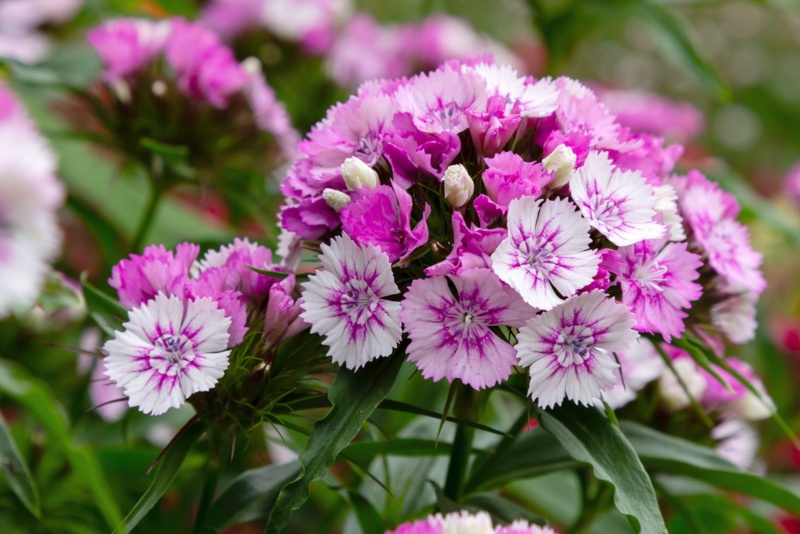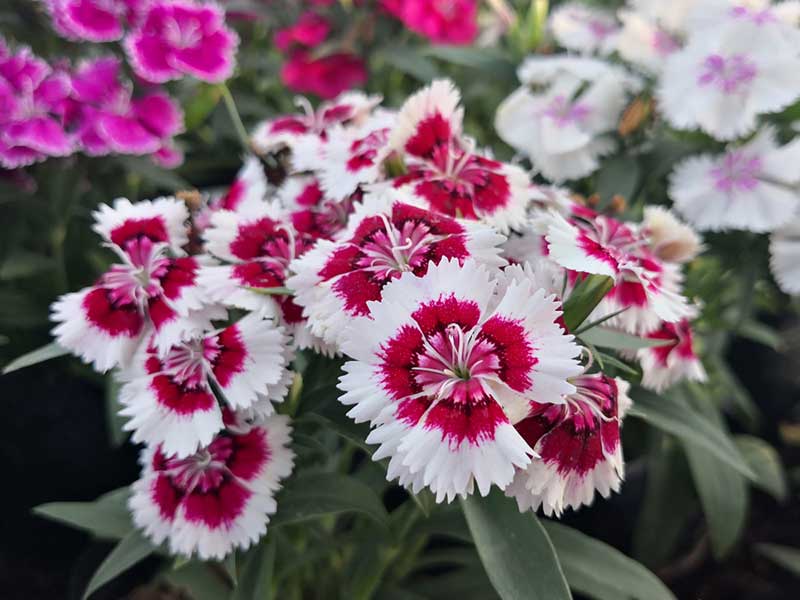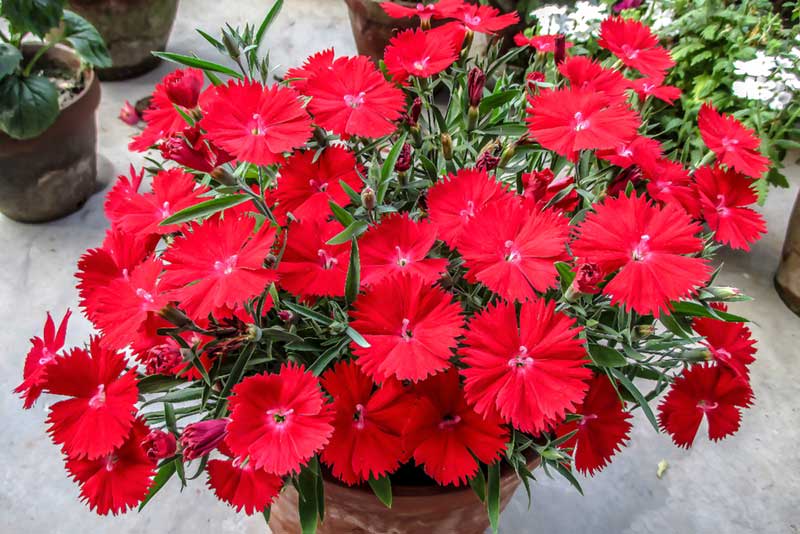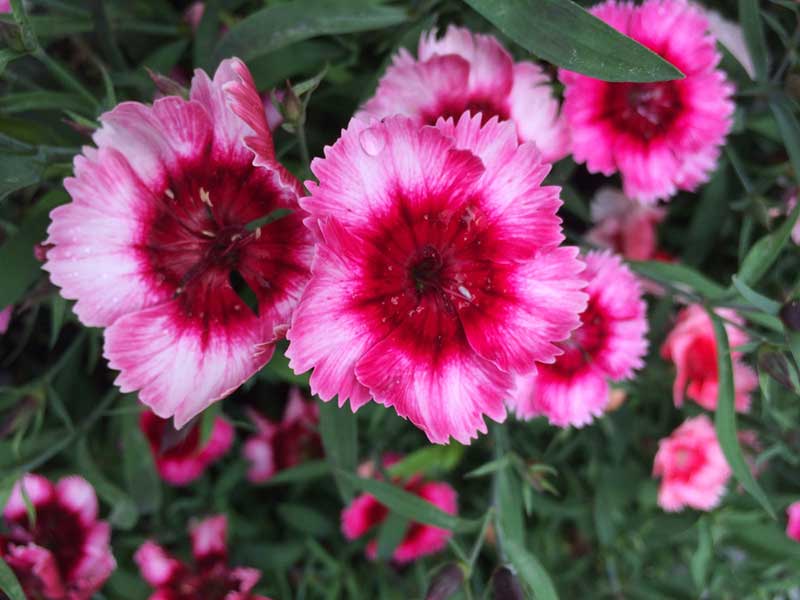
Dianthus is a plant that produces lovely pink flowers that vary in shade. Typically, the petals are two-toned with a frill along the outside edge.
This plant is more commonly known as a carnation, and it’s very simple to care for.
There are more than 300 varieties of this plant, and they can grow to be various sizes that range from 6 inches tall to up to 30 inches in height. In hardiness zones three to nine, these plants will grow quickly, and blooms can be seen from late spring until early fall.
Let’s take a closer look at some tips that will help you care for dianthus plants.
Light Requirements
This plant needs a good amount of sunlight to grow, so find a location where it can get at least six hours of sun. Ideally, the morning sun is best with some shade from the hot afternoon sun. Too little sun will affect the way that the plant blooms; it could also become leggy and grow towards the sun, so just adjust the light if this happens in your garden.

Temperature Requirements
Dianthus is not a finicky plant, so it can easily grow in a variety of temperatures. It does not like high humidity, so if you are growing it in an area that gets humid, make sure that the air circulation around the plant is plentiful. Ideally, the temperature should be between 40 degrees Fahrenheit and 85 degrees Fahrenheit to thrive. It also will tolerate a mild frost, so if it is growing outdoors, and the first frost sneaks up on you, the plant will be fine.
Soil and Fertilizer Requirements
When it comes to soil, the plant is not too picky, but it can struggle to grow in soil that is too acidic. With that being said, planting it in slightly alkaline to neutral soil will be best for the growth of the plant. It also needs soil that drains well so that the roots and the stem of the plant do not sit in water. During the growing season, the dianthus can use some fertilizer to help it grow. I prefer to use a liquid variety with a 20-10-20 formula, but other varieties will work as well. You can even use a slow-release pellet during the growing season, but don’t feed the plant outside of the growing season.
Water Requirements
This plant only requires an average amount of water, so it will not need to be watered every day, especially if it’s growing outdoors. Before you water the plant, make sure that the soil is dry to the touch so that it does not get too much moisture in the roots that will affect the well-being of the plant.

Growing Dianthus from a Seed
When growing a carnation from a seed, it should be planted two to eight weeks before the last frost where you live. Use loamy soil, and cover the top of the container with a plastic bag with a little bit of water. After some time, the leaves will start to appear in the soil. The plant can be transplanted once there are two to three leaves on the new growth. Keep the soil moist and give the plant plenty of indirect sunlight.
Pruning
The more you trim your dianthus plant, the more growth and flowering will be encouraged. Also, make sure that you remove any wilted flowers and trim any damaged stems to make room for new growth. Ideally, this plant should be pruned twice a year. During early summer, it should be trimmed back by about half. Also, during the fall, it should be trimmed back almost to the ground to help it survive the winter.
Pest and Diseases
This is not a plant that is bothered by a lot of insects but watch for carnation flies to lay eggs on the leaves. Aphids can also be found feeding on the stems, but both of these pests can be sprayed off with water. In addition, if you plant garlic near these plants, it will keep these insects from feeding on it. Diseases that could affect dianthus include root rot, rust, and powdery mildew. To prevent these, make sure plants are not overwatered, have adequate ventilation, and don’t grow in humid conditions.





